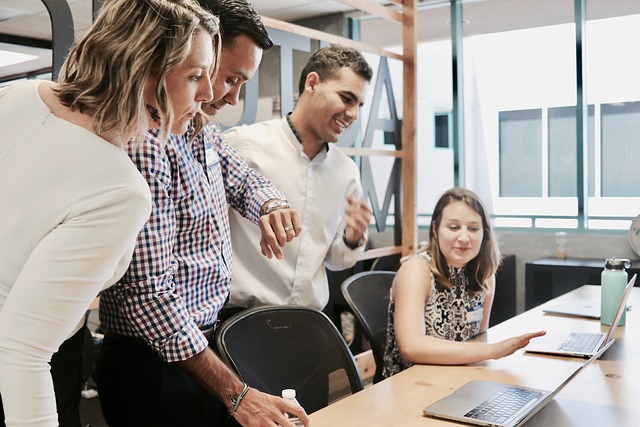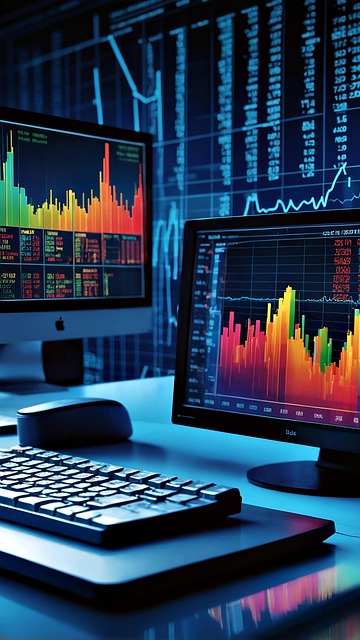AI Business Robotic Process Automation (RPA) is transforming operations by efficiently automating repetitive tasks using artificial intelligence. In the culinary industry, RPA bots optimize food photography for menus, websites, and social media by enhancing images through lighting, composition, and color adjustments, saving time and maintaining visual standards. AI algorithms analyze customer preferences, adjust camera settings, predict compositions, and enhance colors, expediting and improving the photography process. Implementing AI-driven RPA offers businesses an efficient strategy to optimize operations through automation, with best practices including clear scoping, data security, employee training, digital literacy, regular audits, and continuous improvement. AI-driven food photography optimization sets a new industry standard for consistency and quality.
“Welcome to an era where Artificial Intelligence (AI) is transforming industries, and robotic process automation (RPA) is a game-changer in food photography. This article explores the powerful synergy of AI and RPA, specifically focusing on their application in enhancing food photography optimization. We’ll delve into how AI algorithms can streamline repetitive tasks, improve efficiency, and elevate the overall quality of food images. Get ready to discover the benefits, best practices, and future prospects of AI-driven food photography optimization.”
- Understanding AI Business Robotic Process Automation (RPA)
- The Role of AI in Food Photography Optimization
- Implementing AI-Driven RPA: Benefits and Best Practices
Understanding AI Business Robotic Process Automation (RPA)

AI Business Robotic Process Automation (RPA) is a game-changer in modern business operations, offering efficient and precise solutions for repetitive tasks. By leveraging artificial intelligence, RPA bots can automate various processes, from data entry to complex decision-making, enhancing overall productivity. These intelligent machines learn from vast datasets, adapt to changing requirements, and ensure consistent performance, thereby reducing human error and increasing accuracy.
One intriguing application is AI-driven food photography optimization. In the culinary industry, visual presentation is key. RPA bots can analyze and enhance food images, adjusting lighting, composition, and color to create visually appealing content for menus, websites, or social media. This not only saves time but also ensures a uniform standard of photography across different platforms and campaigns, captivating audiences with consistent, high-quality visuals.
The Role of AI in Food Photography Optimization

The integration of AI into food photography is transforming how culinary images are captured and optimized, leading to a revolution in visual content creation for the food industry. With its advanced algorithms, AI-driven food photography optimization enhances the entire process, from image capture to post-processing. These intelligent systems can analyze vast datasets of food imagery, identifying patterns and preferences that influence customer choices.
By leveraging machine learning techniques, AI can automatically adjust camera settings, suggest composition improvements, and even predict optimal lighting conditions for specific dishes. This not only speeds up the photography process but also ensures consistent and visually appealing results. Moreover, AI-powered editing tools can enhance colors, improve textures, and remove unwanted elements with remarkable accuracy, elevating the overall quality of food photographs to capture consumers’ attention in today’s competitive digital landscape.
Implementing AI-Driven RPA: Benefits and Best Practices

Implementing AI-driven RPA offers businesses a powerful strategy for optimizing operations and enhancing efficiency. By automating repetitive, rule-based tasks, AI bots can significantly reduce human error, increase productivity, and free up valuable time for employees to focus on more complex, creative endeavors. For instance, in the realm of food photography optimization, AI-driven RPA can streamline the process of image enhancement, content creation, and asset management, ensuring consistent, high-quality visual outputs.
Best practices for successful integration include defining clear scope and objectives, choosing the right tools that align with specific business needs, and ensuring data security and privacy. Additionally, training employees to work alongside AI bots and fostering a culture of digital literacy are essential. Regular audits and continuous improvement processes should be implemented to optimize performance and adapt to evolving industry standards, making AI-driven RPA a game-changer in various sectors, including food photography and beyond.
AI-driven robotic process automation (RPA) is transforming industries, and its application in food photography optimization is a delicious example. By leveraging AI, businesses can streamline their workflows, enhance efficiency, and elevate the visual presentation of their products. Implementing AI-driven RPA not only revolutionizes how images are captured and edited but also opens doors to innovative marketing strategies. As we navigate this evolving landscape, adopting best practices ensures that companies stay ahead in the market, delivering visually stunning content that captivates consumers.
